Revisiting Record Cleaning with Analogue Alchemist E3 Enzymatic Record Cleaner
In this post (way too long, as always), I experiment with record cleaning using two different cleaning solutions: Analogue Alchemist E3 (£10/20ml concentrate) and Paul Rigby’s Ilfotol-based custom recipe (DIY, but quite inexpensive). I find no difference on new or newish discs with either solution, and some older discs with annoying surface noise don’t improve much. But several discs — all older and generally musty-looking — improved quite amazingly.
Although the vagaries of the process don’t allow me to precisely identify which element of the cleaning process is behind the improvement, I strongly suspect that the Analogue Alchemist E3 Enzymatic Record Cleaner solution is responsible. Why? Because I’ve washed these discs with other processes before, and they never improved. The major new variable was enzymes — and washed with the E3 enzymatic solution, these discs came to life, with reduced surface noise and often stunning improvements in dynamics, texture, and imaging.
Background
As you may recall, I got really obsessed with record cleaning last winter. Since then, I’ve been doing my best to just enjoy my Audio Desk and not ask too many questions…
Yet, two things intervened.
First, my Audio Desk broke. This product is notorious for being both very expensive and very unreliable, and sadly mine proved to be the latter (if not exactly the former, since I got a good deal on an ex-demo model). After a couple months’ use, the pump lost most of its power. Luckily, it was under warranty. I had to pay to ship it back to Germany, and I had to wait a while (this was in the midst of a pandemic, after all), but eventually I got it back, and it works.
Second, because my Audio Desk was broken and I was sans cleaner, I started asking around if any rival manufacturers wanted to send me one to try. No one did, but several went out of their way to tell me, “Hey, did you know that the Audio Desk is not an ultrasonic cleaner?” Apparently there is a consensus among these rivals that the Audio Desk only uses an ultrasonic mister (the ones you’d find in humidifiers) that is useless for the cleaning of records. (Note that they never accused one another of not using ultrasonic technology.)
Anyway, I let all this linger in my mind for a while and eventually it led me to buy myself a Kirmuss KA-RC-1 machine — a device utterly surrounded by nonsense marketing of all kinds, but which I’m sure, at least, is an ultrasonic cleaner (because it’s just a slightly repurposed commercial ultrasonic device).
The Kirmuss arrived before the Audio Desk returned, and I was very eager to give it a shot, and be wowed as an actual ultrasonic cleaning revealed new dimensions to my vinyl. But alas, records sounded exactly the same coming out as going in. I concluded that the Audio Desk might be a real ultrasonic cleaner, after all — or, at any rate, that whatever it used was good enough for me…
The Paul Rigby Ilfotol solution
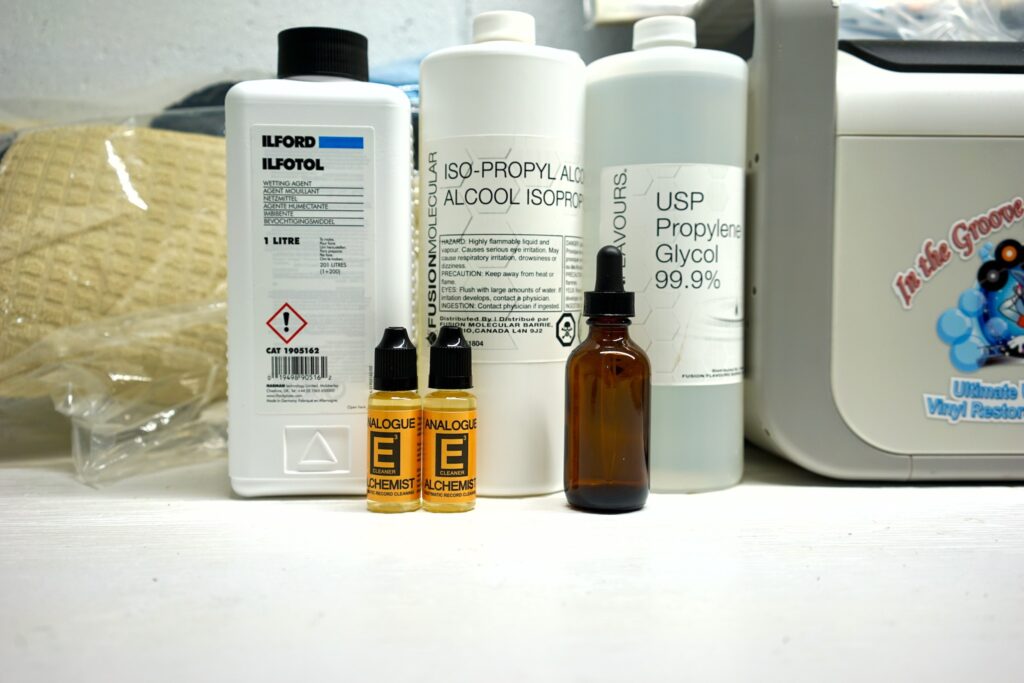
My journey down the Ultrasonic-Or-Not rabbit hole did have one advantage. It got me focused on something that seems to matter more in real-world scenarios: cleaning solutions.
In Paul Rigby’s review of the Kirmuss, he noted how awful (and actually physically nauseating) the included cleaning solution was — but also how beneficial the Kirmuss recommendation of using alcohol in the bath proved to be. This led him, in the course of a few different reviews, to come up with his own formulation for a cleaning fluid — one I’ve been meaning to try.
The basic Rigby approach is to apply a cleaning solution directly to the disc rather than into the cleaning bath. (This has a big advantage for the Audio Desk: it means you don’t need to buy their insanely expensive cleaning solution, and you don’t need to try to squeeze hundreds of cleanings out of each bath in an effort to save pennies.) It’s based on using the surfactant Ilfotol in conjunction with propylene glycol. Here’s the full description, taken from a comment on this post:
Instead of the Audio Desk containing a bath of distilled water and Audio Desk liquid – I use distilled water and 7% alcohol. You only really need 0.5% alcohol for the alcohol to do its job (and that’s another story which I will address soon in a future video) and to clean the grooves, the other 6.5% is used for the following…
Grab a bottle of Ilfotol and dilute as directed into a litre bottle or whatever you decided to use.
Grab a pipette bottle – the one I mention in the Kirmuss review.
Grab a bottle of Glycol – again, the one talked about in the Kirmuss review.
Take two pipette’s worth of Glycol and squirt that into the pipette bottle (a ‘pipette’ of glycol will be around half of the pipette vial).
Fill the rest of the pipette bottle with the diluted Ilfotol. Shake well.
The Glycol will prevent the surfactant falling from the vinyl via gravity. You need 7% alcohol to melt the glycol off the vinyl surface as the RCM cleans.
Once shaken, fill the pipette vial with the bottle’s liquid.
Address the vinyl record now.
Using the vial, draw a line of liquid from the run out groove to the outer edge of the vinyl disk a the 12, 3, 6 and 9 o’clock positions. You will be left with a four-stripe cross around your record.
Grab a Kabuki brush – the one in the Kirmuss review. Buy the best you can afford.
Use that to evenly spread the liquid across the vinyl surface.
Then move your fingers towards the ends of the bristles, leaving a small amount of bristles at the tip. Doing this hardens the remaining bristle tips. Work the surfactant into the grooves in a spiral fashion – clockwise, then anti-clockwise.
Into the Audio Desk with your vinyl – clean your record (I use 5 beeps as ‘one cycle’). I actually then clean for 5 cycles (again, another video subject for another time) but you don’t have to.
When the cycle is complete, repeat again without surfactant to ‘wash’ any lingering surfactant off the surface (you don’t want the stylus to ‘play’ any remaining surfactant).
Sorted.
I bought all the stuff to make up the Rigby Solution, but didn’t get around to trying it until another product arrived…
Enter the Analogue Alchemist, Enter the Enzymes

My friend Simon Clarke, who built my Paradise boards, recently launched a company called Analogue Alchemist whose first product is an enzymatic cleaning solution called E3. After seeing me talking about something related to record cleaning, he sent me two 20ml vials to try out. (Note that Simon is a friend and that he sent me the solution at this own expense.)
The 3 is E3 stands for its “triple” action: enzymes + a wetting agent/surfactant + antistatic formula. It can be used as a standalone cleaning solution — but what interested me in particular were the enzymes (apparently there are two kinds of enzymes in the E3!). I have several records that, despite repeated ultrasonic cleanings in both the Audio Desk and Kirmuss, just don’t sound as good as I think they should. I have never tried an enzymatic cleaning, so I thought maybe it would be able to get rid of some organic gunk like mould hanging out in the grooves.
And of course I was interested to know generally if the Rigby Solution would be revelatory, and how it would compare to E3…
Round One: Cleaning Two Really Dirty Records
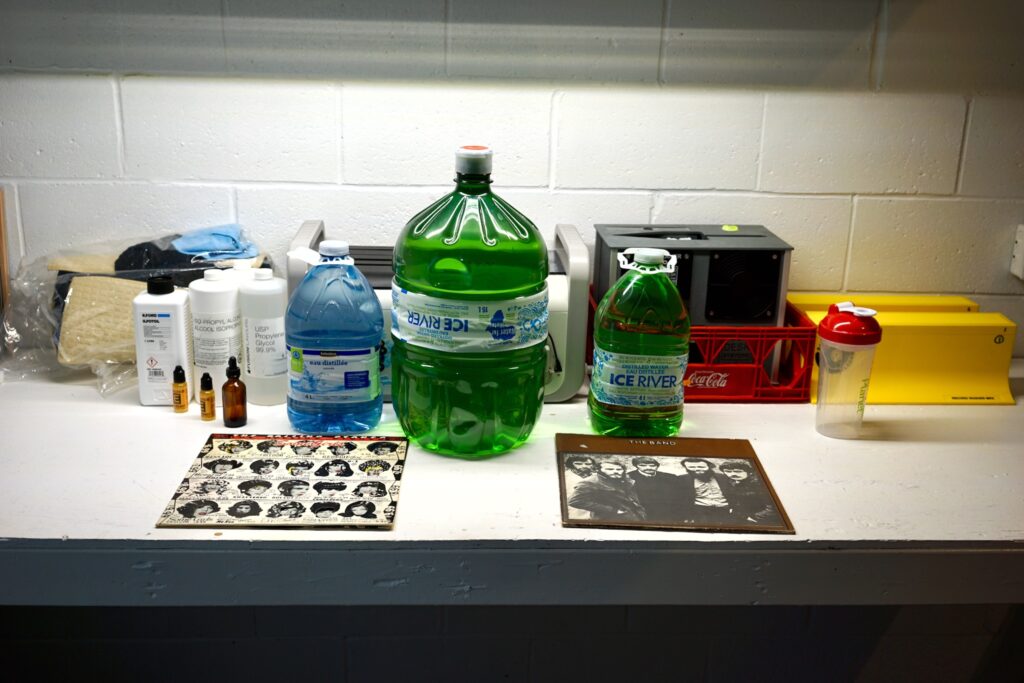
I wanted to start by cleaning two really dirty records. Naturally, I don’t own any such records myself, so I had to go visit a friend of mine 🙂 I took a copy of The Band and The Rolling Stones’ Some Girls — both filthy, the latter in more ways than one!
I began by wiping the dust off both with my record brush, then listening to the first song on each side in its unclean state and taking notes. Suffice it to say that The Band sounded awful, and Some Girls quite a bit better. But both were very noisy.
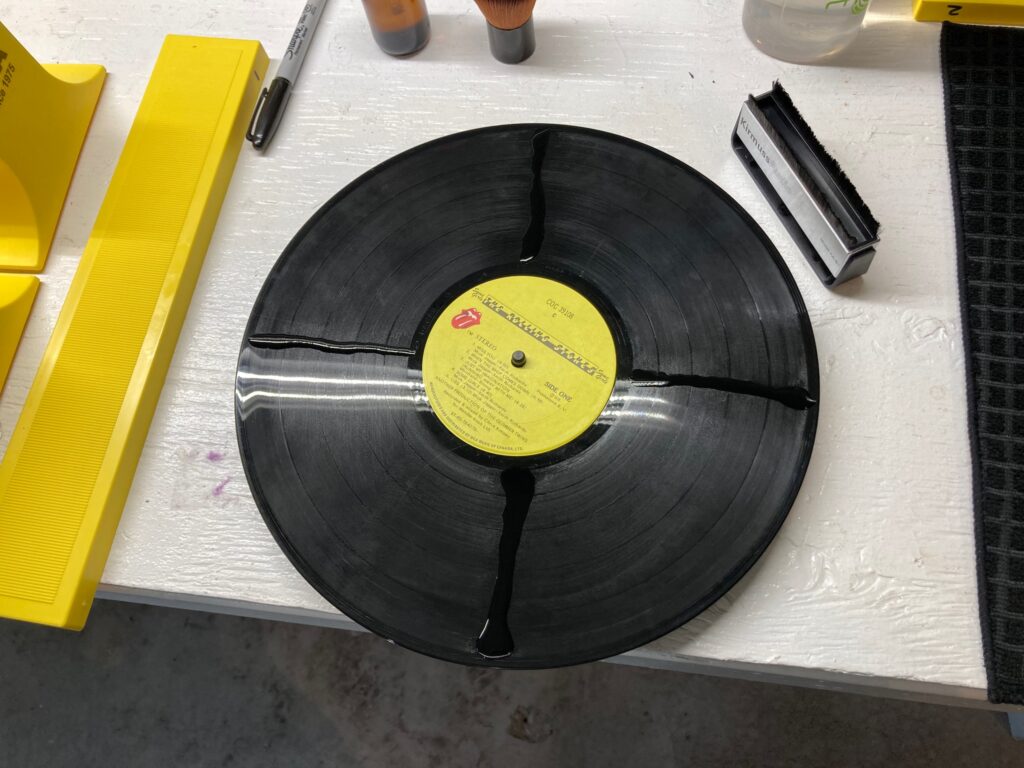
I then applied the E3 to Side 1 of both records and the Rigby to Side 2. I applied it in the manner suggested by Rigby in his steps. Then I popped both into the Kirmuss, followed by a distilled bath. The idea was to see if Side 1 or Side 2 sounded better.
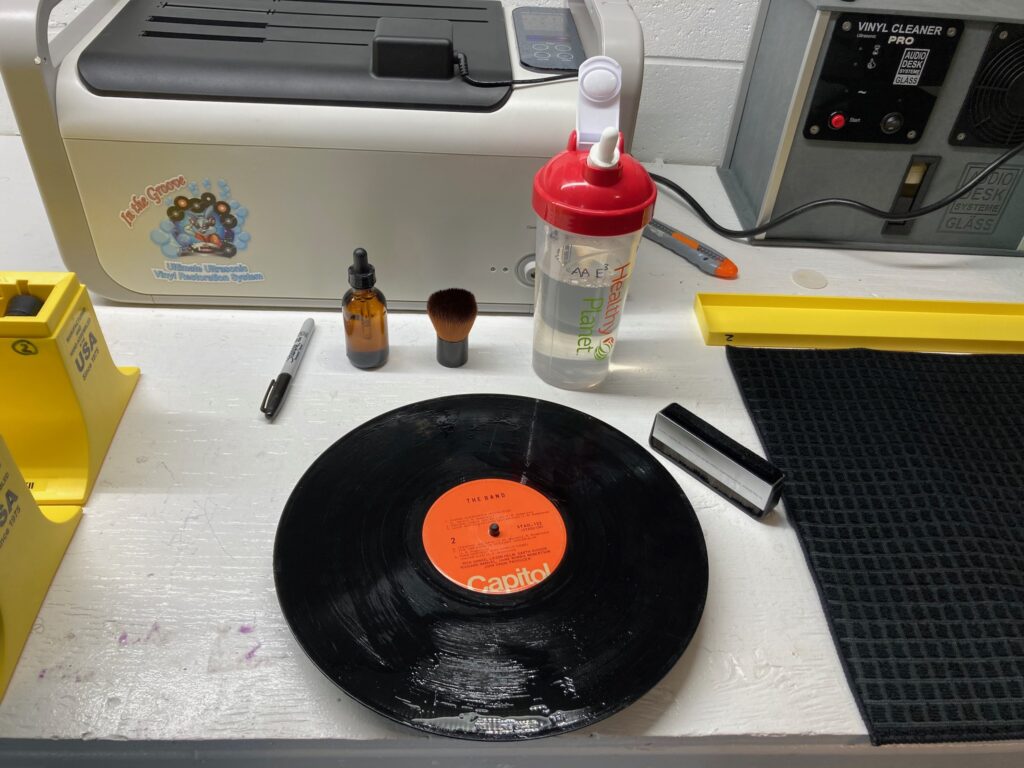
The results were perfectly confusing, as I’ve come to expect from this hobby. On the Stones, Side 2 (Rigby) sounded better than Side 1 (E3). On The Band, Side 1 (E3) sounded better than Side 2 (Rigby). In both cases, though, the improvement was substantial. The Stones record went from sounding good to sounding amazing; The Band from horrible to fairly decent. Record cleaning was working, but which solution was best?
I then reversed the order, cleaning both records a second time, but putting E3 on Side 2 and Rigby on Side 1. The results were again somewhat inconclusive. The Stones sounded better on both sides, but equally so — and I noticed that the songs on Side 2 just seemed to sound better in general than those on Side 1…
Although I was a little annoyed not to come to a clean conclusion about which one was better, I was amazed at how good Some Girls ended up sounding — and as I felt the kick drum in “Beast of Burden” just about knock me over, I was convinced once again of the importance of record cleaning in general…
Round Two: Enzymes, Meet Precious Records
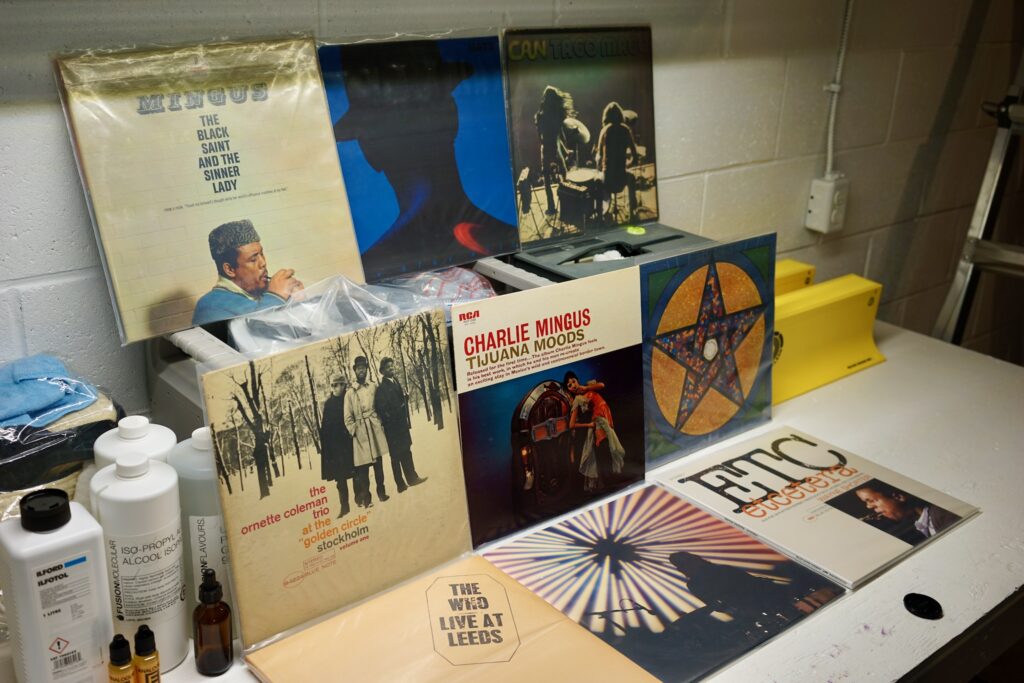
Given how much time the above test took, I decided to just use both cleaning solutions on the rest of my records. I started with E3, leaving it on for 5 or more minutes, then a distilled bath and air-drying, then getting the Rigby stuff on, then into the Kirmuss, then out for a distilled bath and an air dry.
I cleaned two classes of records.
A) New Records
It’s always interesting to see if a brand new or nearly-new record will respond to cleaning. Some do, some don’t.
In this group were Wayne Shorter, Etcetera, Tone Poet pressing; Low, C’Mon; and The Who, Live at Leeds 3LP Abbey Road 1/2 speed mastered.
All of these came out sounding exactly as they had before. (I rate both the Shorter and the Low as A+ pressings in their “before” state, so not much room to move up! But The Who had room to improve, and didn’t.)
I’ll throw my used 1976 Japanese pressing of Mingus’s Tijuana Moods into this category too. It came to me looking absolutely flawless, and it emerged from the cleaning process sounding exactly the same as when it went in.
B) Records with Stubborn Surface Noise
These were obviously the ones I was most interested in trying out: records I’ve cleaned many times with my Audio Desk (and, in some cases, Kirmuss) that show no visual issues but have annoyingly stubborn surface noise and just generally don’t sound as good as I think they should.
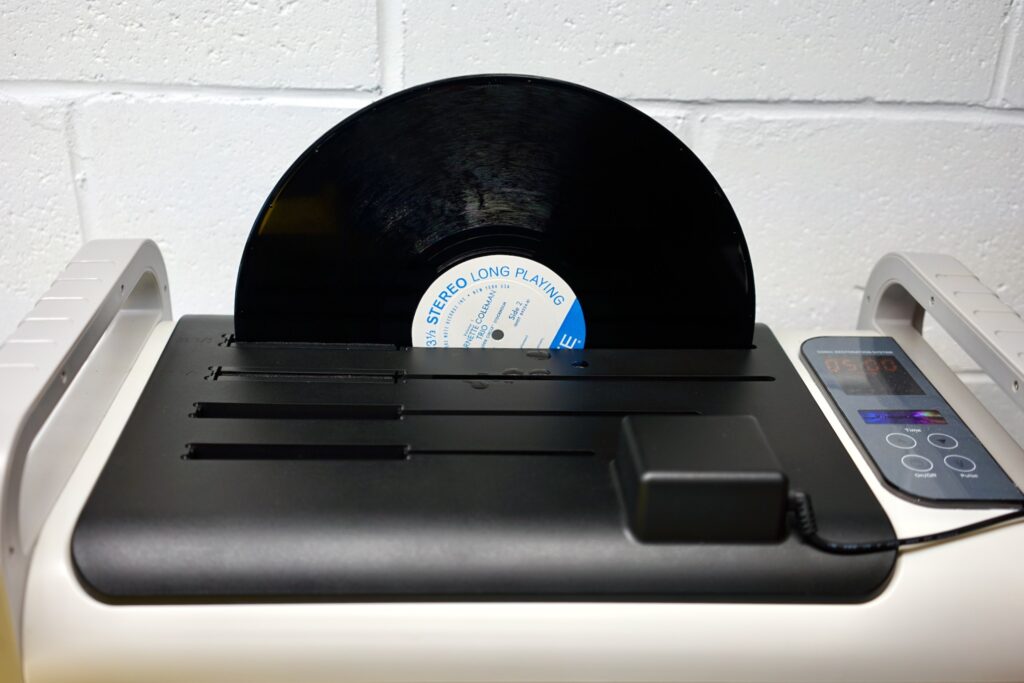
The first is my lone “maximum audiophile” Blue Note disc: RVG stamp and Plastylite ear copy of Ornette Coleman, Golden Circle vol. 1. In the two Best Pressing Shootouts I’ve done, it came out behind the King Japan pressing… which seemed a bit odd. Given how moldy-looking the sleeve was, I thought maybe the vinyl would be similarly afflicted, and the enzymes would have something to chew on.
Correct! This disc came out sounding insanely good and much better than I’d ever heard it. Most notable was the incredibly clear, cutting sax, but the whole atmosphere had clearly improved. I put the King Pressing on and… yes, the cleaned disc was obviously better. (Oh no, does this mean I have to revisit this AGAIN?!)
Second was the Sparton Impulse 1963 pressing of Charles Mingus’s Black Saint, another record I have shot out at length. This pressing has always under-performed relative to its pedigree. The Sparton pressings came from the exact same metalwork as the US pressings — so why did the US pressing sound so much better in the most recent shootout? Well, it might just have something to do with mold, because it came out sounding way better after its E3 + Rigby + Kirmuss cleaning. I’d previously cleaned this three or four times in the Audio Desk, but I’ve never heard it sound like this. It’s still maybe a hair off the US original, but the improvement was massive.
Third was Pentangle’s Sweet Child, which looks absolutely mint and does sound really good but has grating surface noise, especially on the second side. Well, the E3 + Rigby treatment has significantly lowered the surface noise — and made an already stellar record sound even better, with unbelievable soundstaging and remarkable textures on voices and acoustic instruments. This went from being an A to an A+ pressing.
Fourth was my first UK pressing of Can’s Tago Mago, one of my test tracks for the LP12MF. This album sounds fairly good, and did well against a highly regarded French pressing in a shootout, but never quite lived up to its incredible reputation. This was another old record with a slightly musty sleeve: would it improve like the others in that category? Yes, absolutely! This might have been the biggest improvement of the bunch. Damo Suzuki’s vocals came into incredible focus and everything hit much harder. I’ve listened to this record a million times, and this was by far the best yet.
Finally, my early 70s “Black B” Blue Note pressing of Herbie Hancock’s Empyrean Isles also improved massively in the cleaning process. Honestly, I hadn’t realized these 70s Blue Notes could sound this good (this one has the Van Gelder stamps). I’m so impressed with this one now that I’m reconsidering my Blue Note collecting strategy; maybe a shift from Japanese pressings to 70s US pressings is in order…
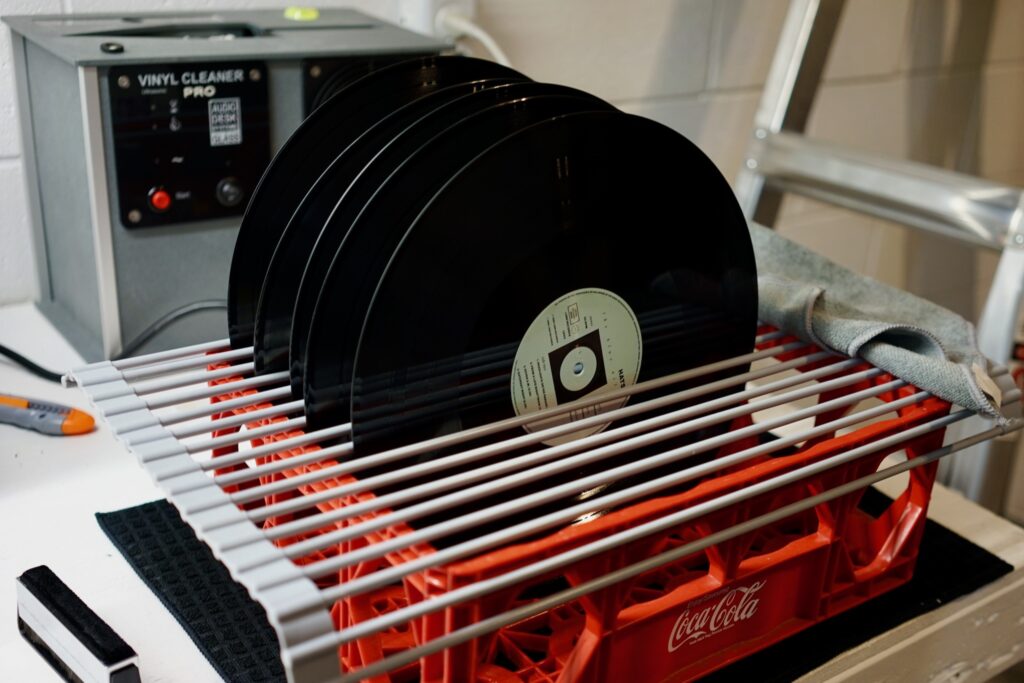
There was only one disappointment in this category: Blue Nile’s Hats, which looks perfect but is plagued by pops and ticks. Sadly, this cleaning process made no difference. I can only assume that someone dragged a worn stylus over it. What a shame…
Conclusions
As I wrote above, I can’t be absolutely sure which element of the cleaning process was responsible for the magic performed on some of my favourite and most stubborn discs. But given that they all fit a similar profile — older, in musty sleeves, showing little improvement with other cleaning formulae or processes — I think it stands to reason the enzymes in the E3 formula were the key ingredient.
I’ll certainly be treating all my older discs with it from now on — or I suppose all my discs, period, just to be safe 🙂

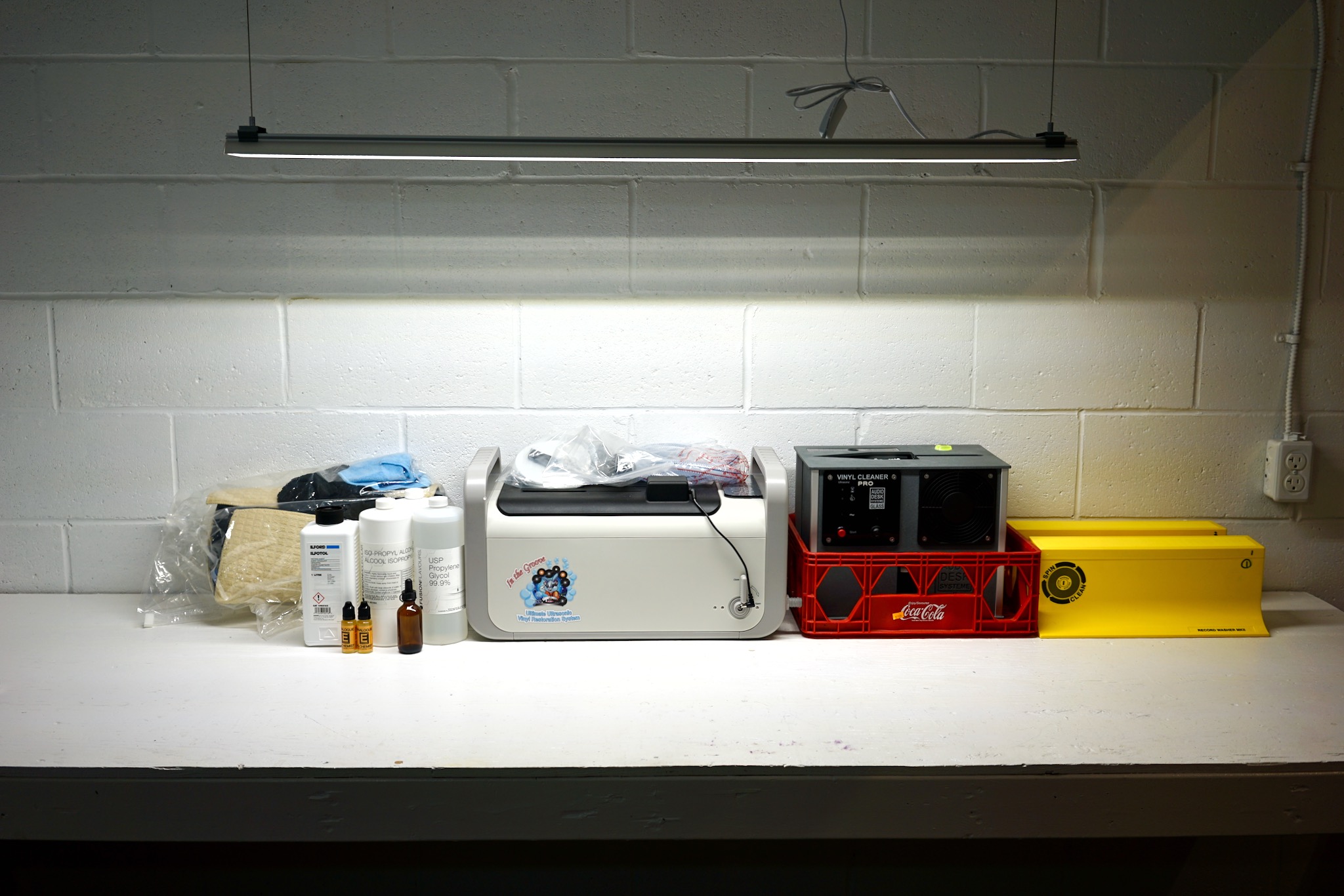
9 Comments
Join the discussion and tell us your opinion.
Thx for doing all the hard work! I have ordered some of the E3.
The recent Blue Nile reissues are worth owning.
Late to the party, but hopefully helpful info: From discussions with a chemist… First, enzymes typically have a short shelf life, specifically in liquid form, e.g. after a few hours then they lose effectiveness. Second, it is very hard to find a happy balance involving enzymes and surfactants combined in the same emulsion, they work better separately and not mixed. Not aiming to endorse a product, but the only enzyme cleaner I have found out there that meets the above criteria is Walker, which is dry and you mix with distilled water in small quantities and is good for a few hours. As a second step, use a detergent (surfactant/tenside) cleaner – Tergitol or something else like the Rigby formula. You will get better results. Basically, hoping for a miracle “juice” all in one cleaner is not as good as a 2-step process. The enzyme and detergent are removing two quite different types of vinyl nasties and don’t work as well when combined.
Thanks for the comment! I’m always eager to refine my record washing technique, so I will definitely give the Walker stuff a shot.
Great. I will be curious on your experiences. I’ve found the two step method works better. There are other enzyme clearers out there that are liquid, such as Audio Intelligent, Buggtessel Vinylzyme, and I even think MoFi still makes one, but the chemist I spoke to was skeptical as to how the enzymes really remained effective. Fresh batch mixes offer best post potency. She even thought that they were not maybe true enzymatic-based cleaners. Given it is a powder concentrate, the Walker is relatively cheap and will likely last a lifetime.
Great — much appreciated. I take it you got yours here, and that you’re in Canada, based on the comment and avatar I see on this page? https://elusivedisc.com/walker-audio-prelude-active-enzymes-record-cleaning-fluid-2-ounces/ So I guess that’s the best place for a Canadian like me to buy some?
Thread on another forum discussing enzyme life: https://www.vinylengine.com/turntable_forum/viewtopic.php?t=78712
Elusive seems to be one of the few to buy Walker products online. Because it is a powder, fairly cheap to ship. FYI, I’m Canadian too. There are also, if you look around on some of the forums, recipes for active enzymes based on using supplements which can be readily found at health food and nutritional stores, may save a few dollars, but Walker is probably the most convenient.
Propyl glycol is the main ingredient in Kodak Photo-Flo 200, which for 50 years has been the go-to recommendation (with alcohol) for DIY record cleaner. (Until reading your article, I never realized the alcohol helped melt the propyl glycol, leaving no trace residue.) Interestingly, Photo-Flo is also recommended for cleaning gravestones because of its ability to get into the narrow crevices of headstone engravings. If it’s good enough to clean the centuries-old muck off of headstones, it should be good enough to clean my records.